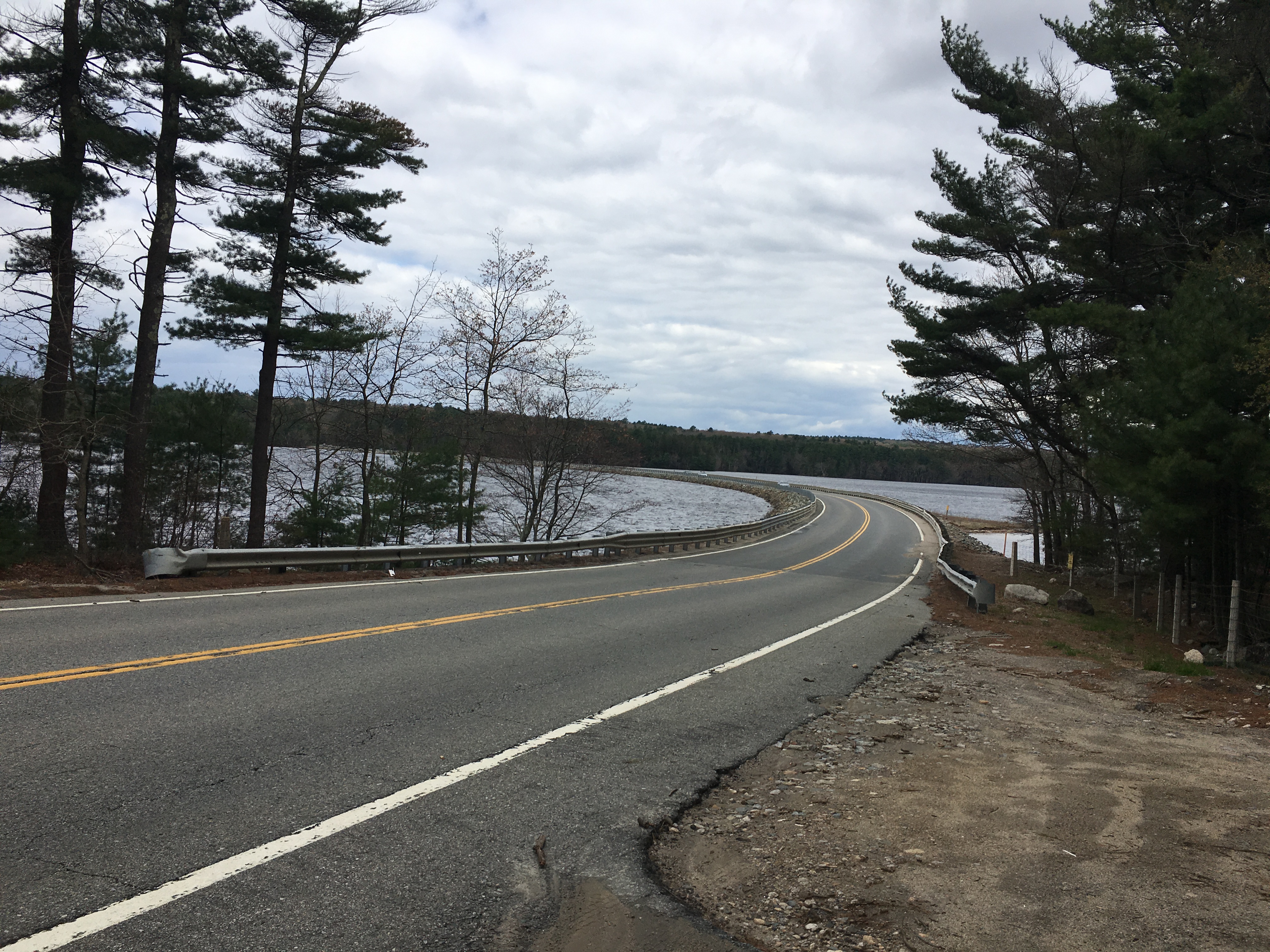Episode 145: Nuclear Plant’s Impact On Hometown; New Menu For School Lunch
This week on NEXT:
The city of Providence, Rhode Island is thinking about selling its water to make up for its large pension liability, but is it the city’s to sell? Plus, new lobster traps could help protect endangered North Atlantic Right Whales from entanglements.
And, as the Pilgrim Nuclear Power Station is set to close later this month, we look at the environmental and economic effects the plant has had on its hometown of Plymouth, Massachusetts.
Finally, we’ll hear from an entrepreneur who’s working to change Boston’s school lunches, and we’ll visit a farm on Connecticut’s coast.
It’s NEXT.
Photo at the top of the page: Elementary school students enjoy fresh cooked lunches at the PJ Kennedy school in East Boston. Photo courtesy of Fiona Turner from the new documentary “Eat Up”
Does Providence Have a Right to Sell Its Water Supply?
Some states and many cities are on the hook for big pension payments to public workers that were negotiated years, in some cases, decades ago. But when the money hasn’t been put aside to pay those obligations, it can cause big problems down the road.
The city of Providence, Rhode Island is in such a pickle, and not surprisingly, at least a part of the problem can be traced to infamous former Mayor Buddy Cianci. So, how to find the money to pay its pension obligations? How about selling the city’s water supply? Sofia Rudin, Morning Edition Producer for The Public’s Radio took a look at what this would mean in a three-part series.
Listen to part one about how the pension debt got so large here. Part two deals with the question of who has a right to sell Providence’s water supply. In part three, Sofia visits the nearby town of Scituate, where the city’s water supply is to see how they feel about the question.
Creating Whale-Safe Lobster Traps
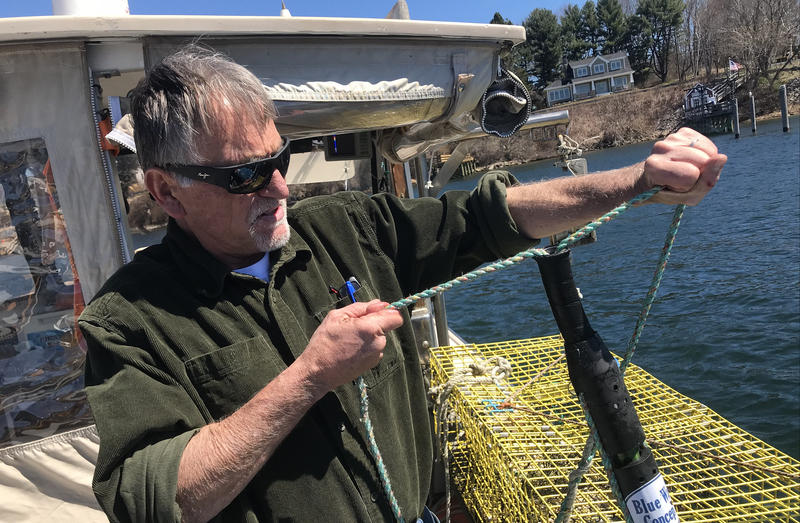
Ben Brickett tests out his time tension line cutter in the Piscataqua River. Photo by Fred Bever for Maine Public
We’ve been following how the future of an endangered whale species is tied up with the future of the lucrative New England lobster fishery. At the end of April representatives from over a dozen states along the Atlantic coast met to discuss the future of conservation efforts to help protect the endangered North Atlantic Right Whale. The recommendations agreed upon by the group include a 50 percent reduction in trap rope, it’s what lobstermen use to pull up their catch, and it’s also what’s entangling whales, leading to their near-extinction.
As Maine Public’s Fred Bever reports, these changes will have a big effect on the lobster industry, but he found some people looking at possible solutions.
This week, the lobster fishery off of Cape Cod was shut down for an extended time by the Division of Marine Fisheries because “right whales remain in the waters of Cape Cod Bay feeding at or near the surface.” Their preferred food source, a kind of plankton, is plentiful right now, and that means no traps in the water of the bay until May 14.
The Effect Pilgrim Nuclear Plant Has Had on Cape Cod Bay
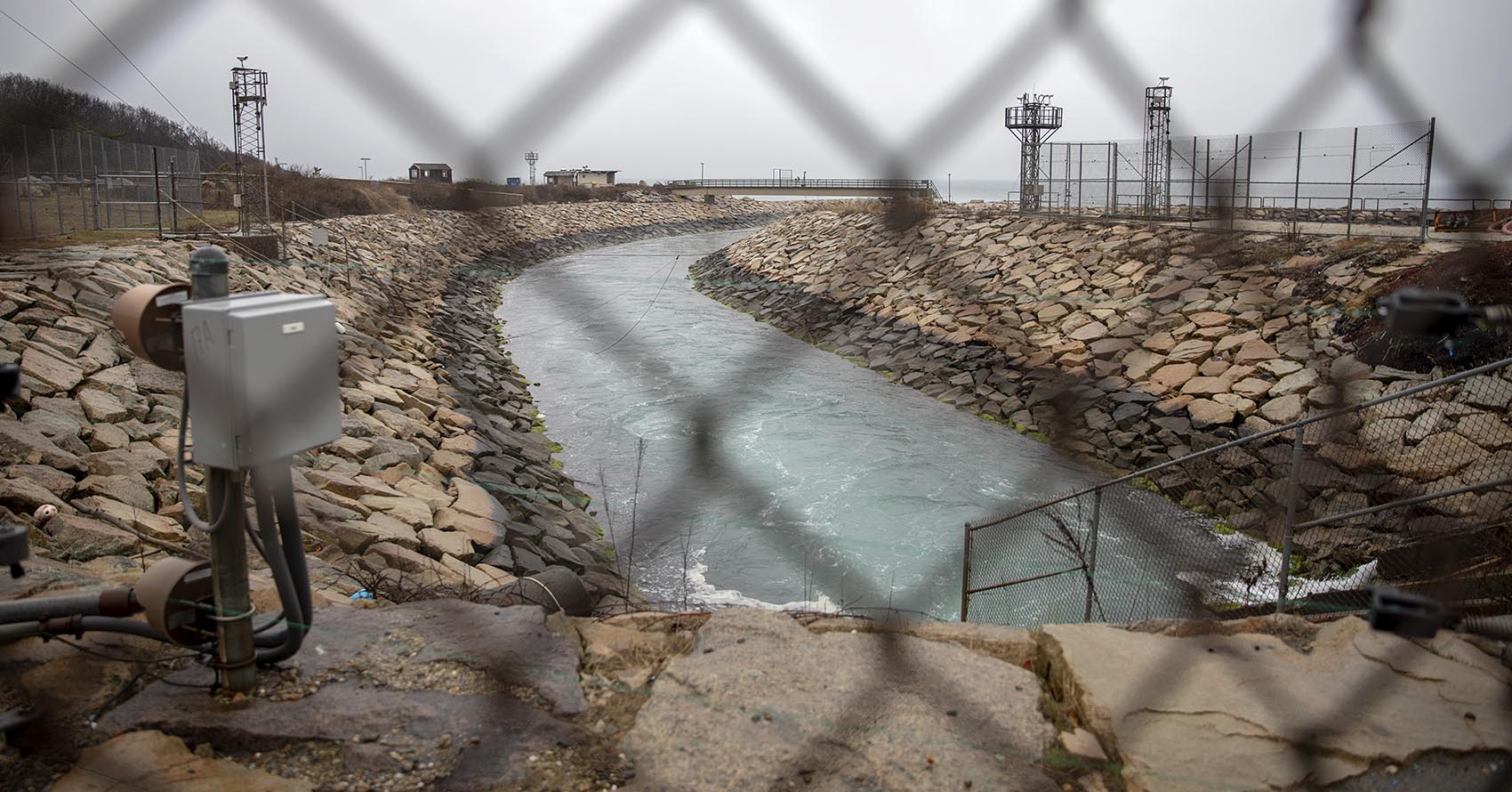
The discharge canal at Pilgrim, where water used for cooling at the plant is release back into the bay. Photo by Robin Lubbock for WBUR
As we’ve reported in our project “The Big Switch,” nuclear power is still a big part of New England’s energy mix. But that’s changing, as the Pilgrim Nuclear Power Station in Plymouth Massachusetts gets ready to close at the end of the month.
Pilgrim has pumped about half a billion gallons of water out of Cape Cod bay every day for 46 years. The plant uses the water to cool down and then releases it back into the bay. When that warmer water is returned to the source, it can threaten marine life and exacerbate the problem of ocean warming. Here’s WBUR’s Miriam Wasser.
Pilgrim Nuclear Plant and Plymouth’s Economy
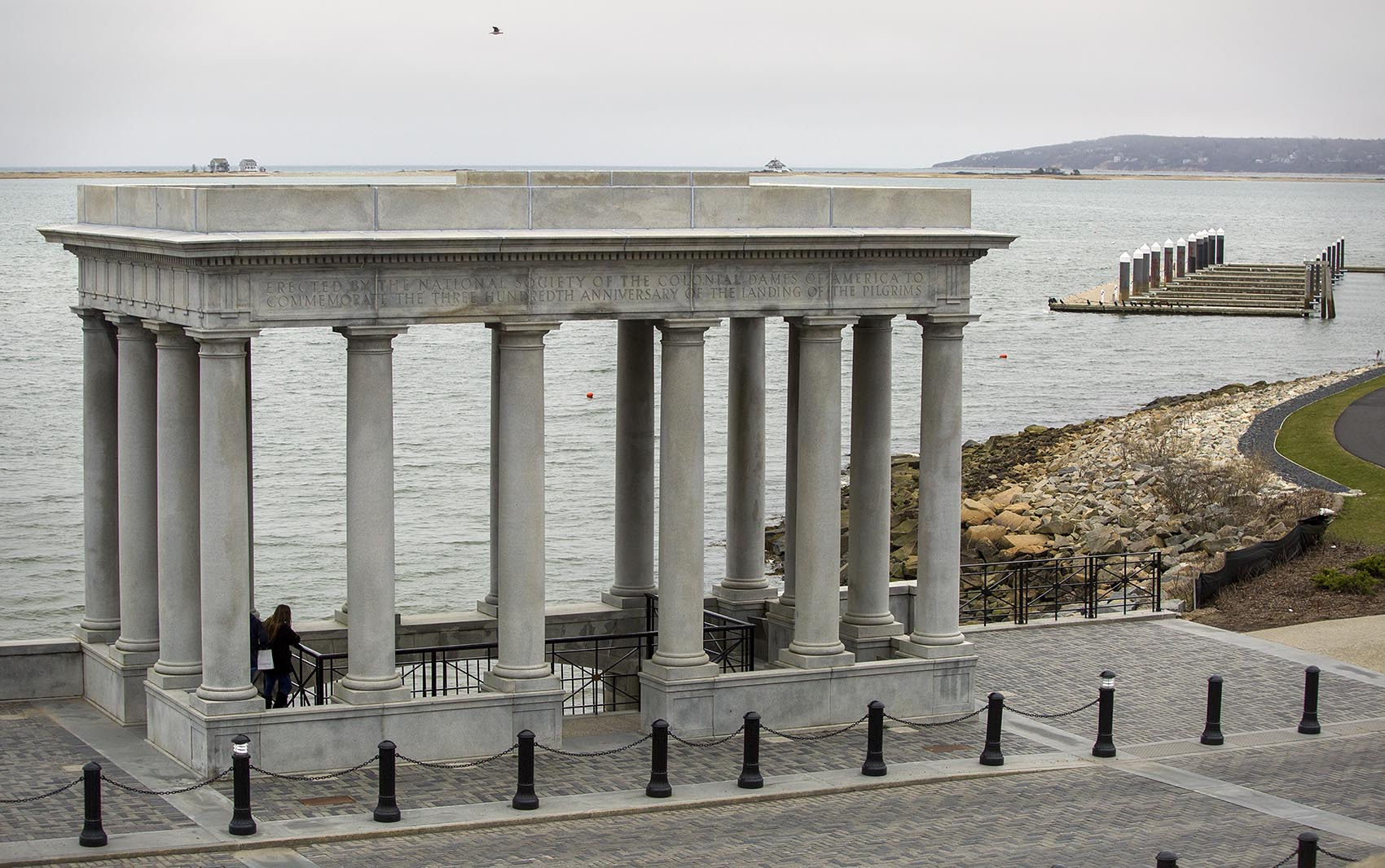
The Plymouth Rock portico looks out across the Plymouth Bay to Rocky Point, the location of Pilgrim Nuclear Power Station. Photo by Robin Lubbock for WBUR
When the Pilgrim Nuclear Power Plant shuts down, it will have endured 5 decades of protests, emergency closings, and courtroom battles.
But it’s also meant a lot to the historic place known as “America’s Hometown.” WBUR’s Bruce Gellerman has the story of Plymouth adjusting to life post-Pilgrim.
Both of these pieces are from a series from WBUR’s Earthwhile titled “Closing Pilgrim.” You can find the full series here.
New Documentary Details Attempt to Change School Lunches
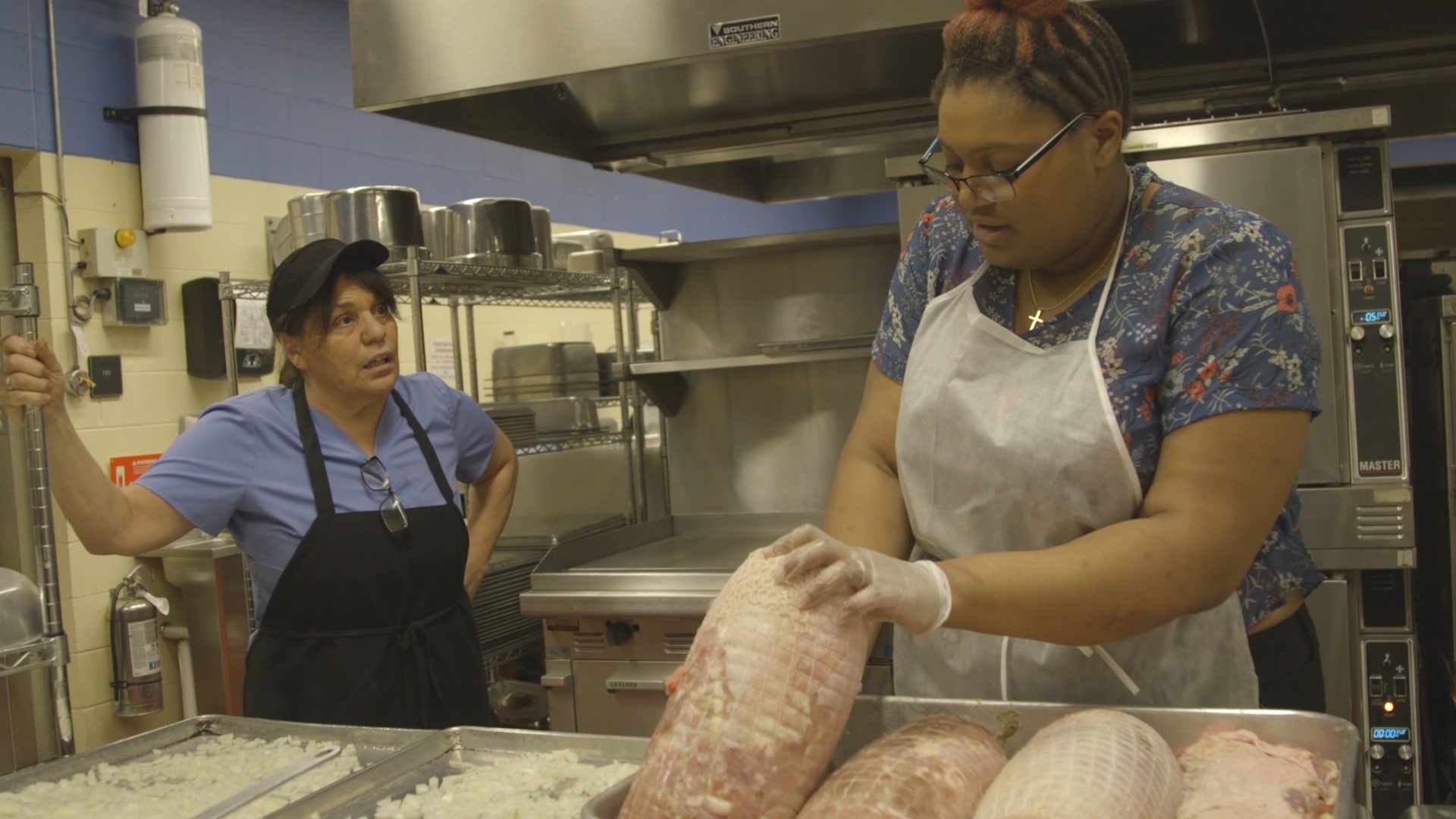
Cafeteria staff works overtime cooking raw turkeys. Photo courtesy of Fiona Turner from the new documentary, “Eat Up”
You know those airplane meals that arrive in those pre-frozen packages? Heated up in the back of the plane, with condensation leaking down from the plastic lid? It’s not too appetizing. But for years, that’s what many kids in schools around the country are getting for lunch every day. And for many of them, that means not eating all day.
A new documentary called “Eat Up” follows Jill Shah, a Boston-based entrepreneur, and philanthropist, as she set out to change the lunches in Boston’s Public Schools, working to bring fresh, nutritious food to students around the city. Fiona Turner directed the documentary, and they both joined us in the studio.
The film will be screening at Boston’s Museum of Fine Arts June 5-June 9. Tickets will go on sale through the MFA box office on May 23.
Meet the Women Changing Connecticut’s Food System

Spinach and other leafy greens are grown inside a hoop house, a structure similar to a greenhouse that enables farmers to extend the growing season in northern climates. Photo by Cassandra Basler for WSHU
We found another place that’s trying to change the way we think about food: Stonington, CT. This historic eastern Connecticut town has always revolved around the ocean.
Now, a 250-year-old farm wants to diversify the food economy in more ways than one. It’s become a hub to learn about what we eat, and value the men, and women, who produce our food. From WSHU, Cassandra Basler reports.
New England Music Featured on NEXT
About NEXT
NEXT is produced at Connecticut Public Radio
Host: John Dankosky
Producer: Lily Tyson
Digital Producer: Carlos Mejia
Senior Director: Catie Talarski
Contributors to this episode: Sofia Rudin, Fred Bever, Miriam Wasser, Bruce Gellerman, Cassandra Basler
Music: Todd Merrell, “New England” by Goodnight Blue Moon, “So Blue” by Audio Jane, “Same Town” by Chris Ross and the North
—
New to NEXT? You can find every episode or one you missed within our archives.
We need your feedback! Send critiques, suggestions, questions, and ideas to next@ctpublic.org. Help us spread the word! If you like what you hear, rate and review us on iTunes.


